Discovery Park Field Journal
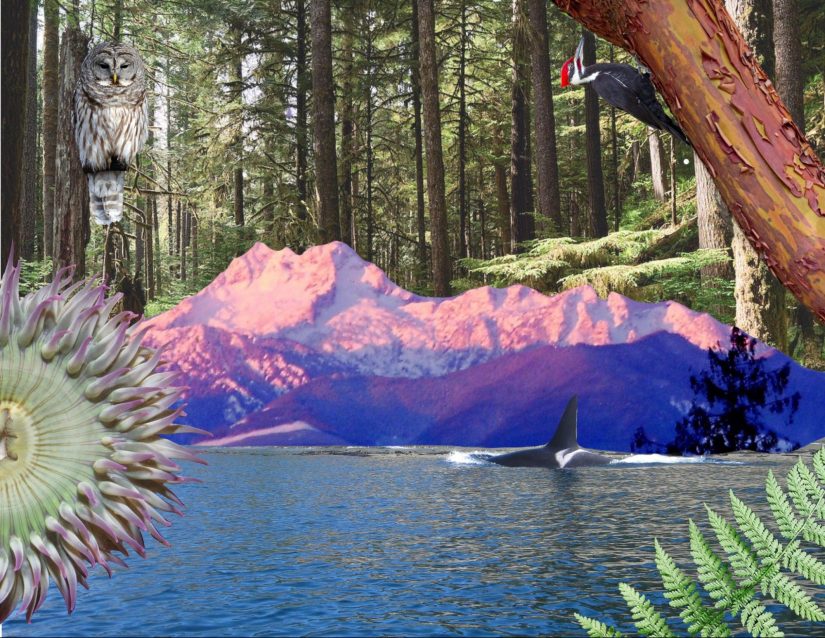
Every afternoon, I find myself entranced by the fern-covered forest floors, wide grasslands, and beaches dotted with anemones. All of these ecosystems exist in Seattle’s Discovery Park, just a few miles from my house. When I moved to Seattle, I definitely sought out parks to take my dog, Maple, as a way for her to decompress from the city life. When we lived in Michigan, we took hikes regularly and I wanted to be able to continue that routine for both of us. Luckily, we moved right down the road from Seattle’s largest natural area within city limits. I began to go to Discovery Park almost daily with Maple for her afternoon walk, but I quickly realized that it also served as my constant dose of nature in a bustling and concrete-laden city. This park has done wonders for my mental health – getting to breathe in the fresh air, taking in the solitude of natural space, as well as quietly appreciating the wildlife that surrounds me. In the past year of coming here, I have observed the seasonal changes in plants and landscapes, nesting sites of birds that were once unfamiliar but now easy to seek out, the beat of the drums during Seafair Indian Days Powwow, or the barks of sea lions carried throughout the wooded trails, connecting the land to the sea. This field journal will share memories and interesting facts about some of the species I have connected with throughout my year of daily walks in Discovery Park – enjoy!
SKY: Pileated Woodpecker
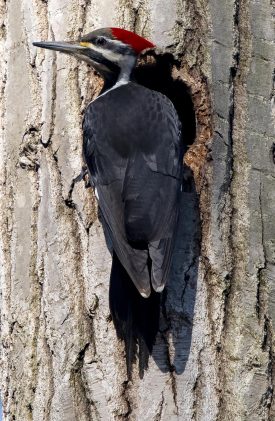
It took me almost a year to see a pileated woodpecker at Discovery Park, I saw my first one in August. Since then, I have encountered them a few more times. Most recently, I was walking on one of my favorite, least-crowded trails in the park, cutting through a bed of ferns under the canopy of Douglas firs and big leaf maples. I had heard the sound of a woodpecker drumming into the wood of a tree, and when I looked to my right, there was one ten feet from me. Typically, pileated woodpeckers are shy, flying away quickly as humans approach. However, this one was deep in its search for food, pecking away at the dead tree just a few feet above the ground. It was seemingly unbothered by my presence, so Maple and I watched for several minutes. It danced up and down the trunk until Maple and I decided to continue our walk through the forest.
Did you know woodpeckers can peck their head into a tree up to 20 times per second? While there are hypotheses that their tongue wraps around their brain as a cushion to prevent concussions and brain trauma, these studies are inconclusive.
SKY: Barred Owl
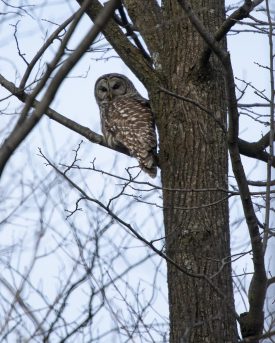
For me, owls always have been and always will be an animal whose presence feels otherworldly. For the last year, I would occasionally hear hoots from the forests around the parking lot at dusk, but it took me nearly eight months before I observed one. Barred owls blend beautifully into the bark of trees, making them nearly impossible to spot even to the trained eye. The easiest way to see them is during flight, where you can watch them silently soar through the forest. One afternoon during one of the hottest weeks of summer, I decided to keep my walk with Maple as much in the woods as possible given that it was several degrees cooler. We often walk in the grassy field, so it was fun to explore some of the trails we had yet to go on, while staying cool in the shade. These trails were quiet, so the sound of our bodies moving through the vegetation were amplified. As we were nearing the middle of our walk, I saw some movement out of the corner of my eye. A barred owl flew right in front of us, crossing our path on the trail and landing in a nearby tree. I felt incredibly lucky to have seen one so close, let alone to have seen one at all. Later that week, we were back at the park, still in the shaded woods as the afternoon temperatures reached the mid-nineties. We were walking on a different set of trails, but not too far from our initial owl encounter. It was the same time of the afternoon and another peaceful and uncrowded day at the park. We saw a barred owl again that day. I am not sure if it was the same one, but its presence was welcoming and familiar – a week I will never forget.
Did you know that historians believe that Harriet Tubman, an incredibly knowledgeable naturalist, would mimic the call of the barred owl as a signal to people who were seeking the Underground Railroad?
LAND: Pacific Madrone
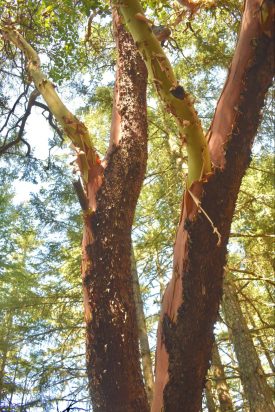
When I first moved to Washington after graduating from college, my partner and I moved to San Juan Island. It was my first time being in Washington, so I was continually astounded by how different the landscapes, plants, and animals were between here and my home state of Michigan. The Pacific madrone quickly became one of my favorites. Its peeling bark revealed smooth green interiors, a color I had never seen on a tree trunk before. They grow in coastal forests with shallow soil, their branches winding and knotty. The texture of the bark is so smooth it almost feels like leather. For me, this tree symbolizes the beauty of Washington state and the intersections between land and sea. When I moved to Seattle, Discovery Park was the first place I went. When I got there, I saw a madrone, instantly bringing a feeling of home, reconnecting with these special trees and bridging the geographic gap between Seattle and San Juan.
Did you know that madrone trees often change their direction of growth to maximize the amount of sunlight they receive and outcompete the nearby trees? For that reason, they usually have a twisted trunk.
SEA: Orca
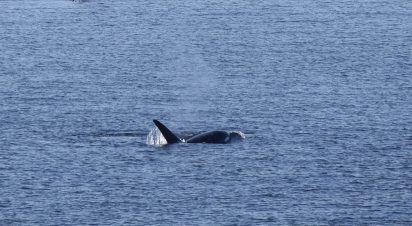
When I first moved to Washington, it was for the whales. I had just graduated with a degree in marine ecology, and I wanted to pursue my goal of becoming a marine mammal scientist. I worked as a researcher and naturalist on San Juan Island, where I was fortunate enough to interact with the endangered Southern Resident orca population regularly. When I moved to Seattle to begin graduate school, I was hoping that I would still be able to encounter whales somewhat frequently. While there are plenty of cetaceans (i.e., whales, dolphins, and porpoises) in the Salish Sea, the traffic, layout, and marine ecosystems in Seattle make it much more difficult to find whales than it was on San Juan Island. Because I frequently visit Discovery Park, I had always been hopeful that if I were to see orcas in this city, it would happen there. One of the first sunny afternoons this winter, I went on a walk with Maple and my partner, Ben. We sat on the bluff and watched the sun illuminate the Olympic Range as we looked over the water. At a great distance, we saw a dark outline break the water’s surface. We squinted and watched as we saw a pod of orcas surface, breaching every few minutes. My dreams of seeing orcas from the Discovery Park bluffs came true, and it is to this day, the only time I have seen orcas in Seattle.
Did you know that orcas have unique dialects (composed of clicks and vocalizations) that are shared within each pod? These differences in dialects are similar to differences in regional dialects in the English language, or as different as English is to that of foreign languages.
SEA: Aggregate Anemone
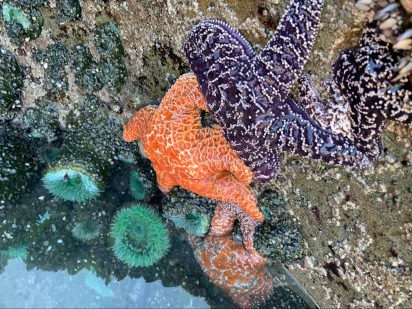
Anemones are an animal that I often associate with aquarium touch tanks, so when I first encountered them in the wild when I moved to the Pacific Northwest, I thought they were the most fascinating, alien-like creatures I had ever seen. Aggregate anemones are one of the species I most often find at Discovery Park. During low tide, the beach goes out for hundreds and hundreds of yards, exposing rocks, anemones, intertidal ecosystems, and other sand-covered creatures. I love spending time observing the changes in these animals as the tide uncovers and recovers them. Their adaptations allow them to bridge the land and the sea, connect humans with nearshore environments and provide joy to anyone who encounters their whimsical nature.
Did you know that when an anemone is exposed to air, it will shrink by retracting its tentacles? Aggregate anemones have sticky bumps on their base that will collect sand, shells, and small rocks which help them camouflage and retain moisture.
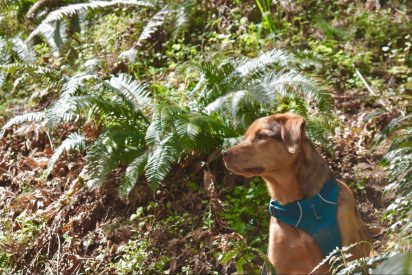
While this is just an abbreviated list, it touches on creatures from the land, sea, and air that have contributed to fond memories from my walks with Maple. I feel this practice of walking, observing, and reflecting has helped provide a break in the day where I can mentally escape from my responsibilities. Through these afternoon adventures, I have learned to focus on being in the present, picking up on the details in my surroundings, and enjoying the quiet solitude that is often lacking in a city. These walks serve as my meditation, the fresh air as my medicine, listening, seeing and hearing the landscape and the animals that surround me. It has encouraged me to learn more about the flora and fauna I observe, fulfilling my natural curiosities outside of my academic pursuits. I hope it inspires you to get outside, slow down, and enjoy your senses picking up on the landscapes and ecosystems around you!